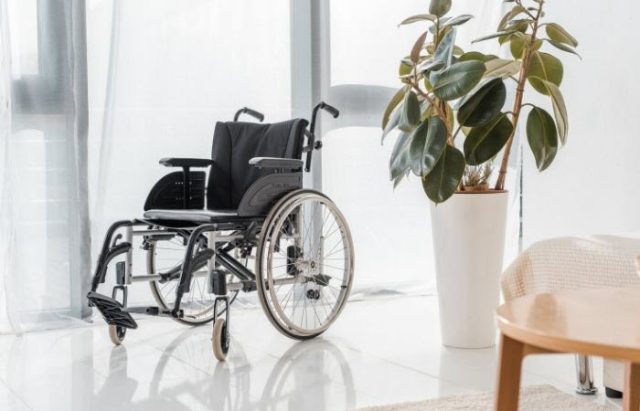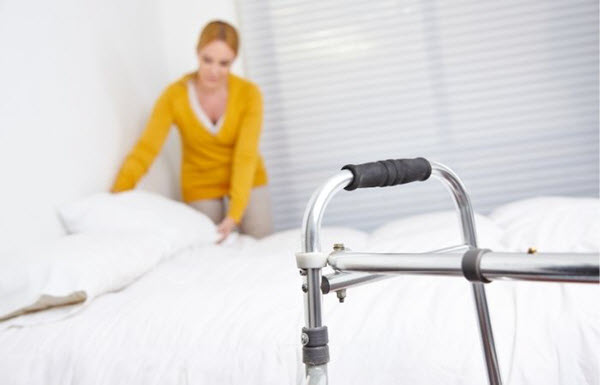The Future Of Nursing Homes Post-Pandemic
By Brian Wallace
March 2, 2021 • Fact checked by Dumb Little Man

In the upheaval of 2020, few groups of people suffered as much as nursing home residents and staff. Of the half million recent deaths in America, 36% of them took place in long-term care facilities. In some states, that percentage was as high as 54%. Hundreds of thousands of senior citizens and caretakers will never be seen again.
While the elderly and those with health conditions were uniquely susceptible last year to infection, the conscious choices of nursing homes made the casualties worse. In cases of viral infection, residents were given ineffective antibiotic treatments.
The ban on family members visiting residents did not have the desired effects as nursing home workers became major spreaders of the disease. Due to these failures and more, nursing homes have a worse reputation than ever. 1 in 2 Americans harbor more negative feelings towards nursing homes now than they did in 2019.

As a result of both the deaths and a freeze on new residents, occupancy in long-term care facilities fell by nearly 20% in 2020. While revenues were falling, costs for nursing homes also rose. These two factors put together have put the majority of nursing homes in a tight financial position.
65% of long-term care facilities have operations in the red while 25% more are barely breaking even at a margin of under 3%. Without immediate relief, many of these facilities will close their doors in the near future, putting present and future residents’ lives into uncertainty.
Nursing homes may not be popular institutions, but they are necessary ones. As the American population gets older, more people will require the long-term care that nursing homes provide. 90% of people say they want to avoid nursing homes, but the reality is that 70% of seniors will end up in them at some point in their lives.
Recent events are encouraging people to think about and save for long-term care in higher numbers. If nursing homes close their doors now, they will not be around to see these customers when the time comes.
So what can remaining nursing homes do to prepare for the future? Residents and their families have new expectations in the new decade. More than half of those looking for an assisted living or memory care facility want an onsite physician or telemedicine available.
Frequent and visible cleaning can show residents and their families that a facility will be safe. It’s no longer enough to confine disinfection efforts to the night shift. Other factors that ought to be improved are staff to resident ratios, worker pay, and staff turnover rates, all of which make the workforce in nursing homes less effective and resilient.

In the 2020s, a good reputation starts with cleanliness. On popular review app Yelp, a quarter of nursing home reviews cite cleanliness of nursing homes (or lack thereof) as a notable factor, making it the third most mentioned attribute behind staff attitude and responsiveness.
Prospective residents want to know if a facility is clean before they move in, and many use the “sniff test” to determine if the site’s cleanliness meets their standards. Black and Latino families rank cleanliness especially high when searching for a nursing home, so as more diverse generations age, cleaning will rise in importance.
Many aspects of improving cleanliness are easy to implement. Encouraging frequent and proper hand washing by staff, visitors, and residents is simple when said parties are provided the necessary products.
One-step multi surface cleaners can simplify the process considerably so long as they are used effectively and consistently. Many professional cleaning companies offer highly trained subject matter experts to nursing homes to make sure they have the best practices.
Controlling the spread of disease doesn’t stop with any particular ailment. Nursing homes residents are vulnerable to a whole host of infections, including antibiotic-resistant UTIs, lower respiratory tract infections, MRSA carriers, and sepsis.
Improved surface cleaning and disinfection may be able to reduce the infections listed above by as much as 85%. Simple methods to address the spread of disease in a nursing home could potentially save thousands of lives every year.
Disinfecting a nursing home’s reputation starts with disinfecting their internal surfaces. In 2021 and beyond, staying safe is staying clean.
Brian Wallace
Brian Wallace is the Founder and President of NowSourcing, an industry leading infographic design agency based in Louisville, KY and Cincinnati, OH which works with companies that range from startups to Fortune 500s. Brian also runs #LinkedInLocal events nationwide, and hosts the Next Action Podcast. Brian has been named a Google Small Business Advisor for 2016-present and joined the SXSW Advisory Board in 2019.


